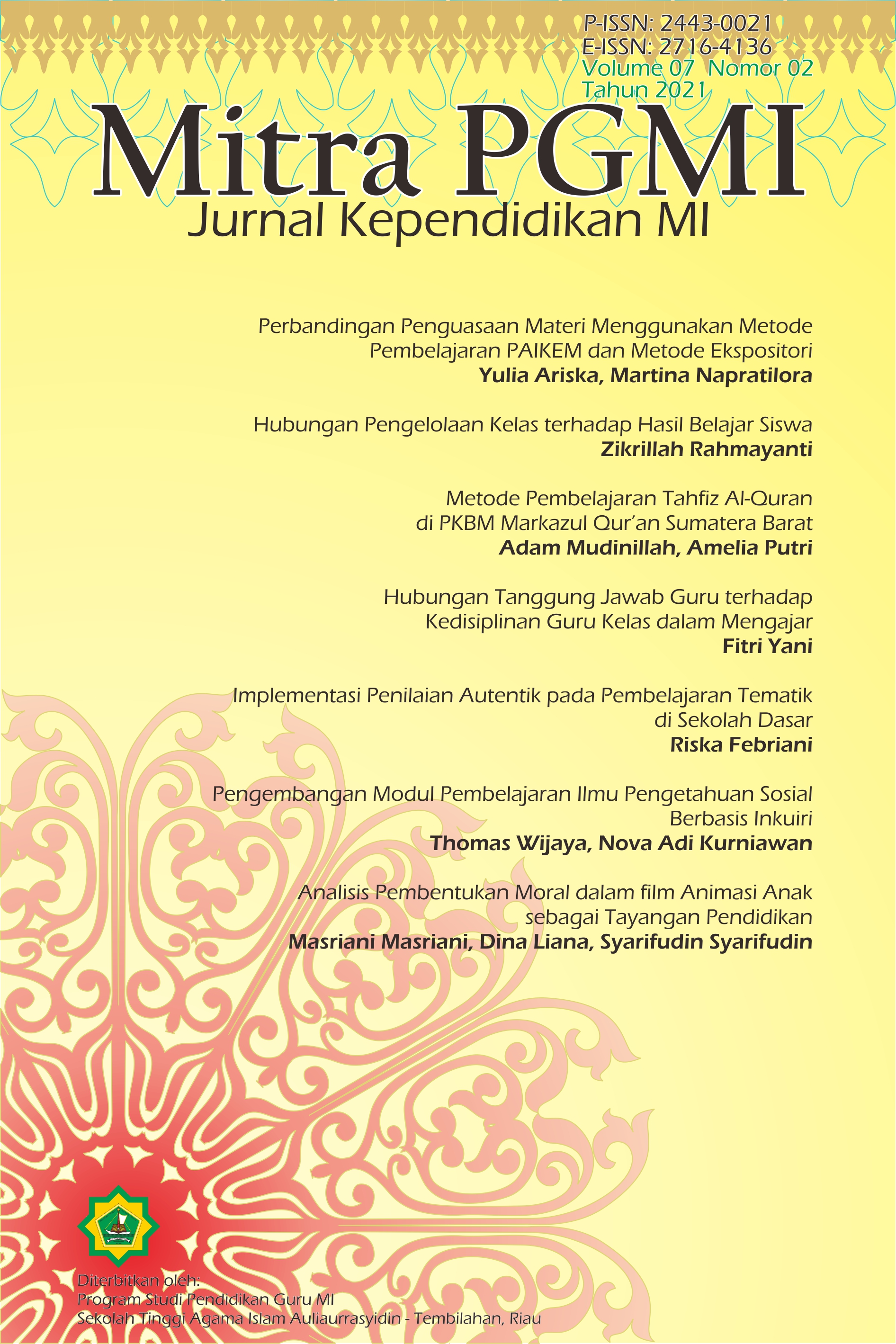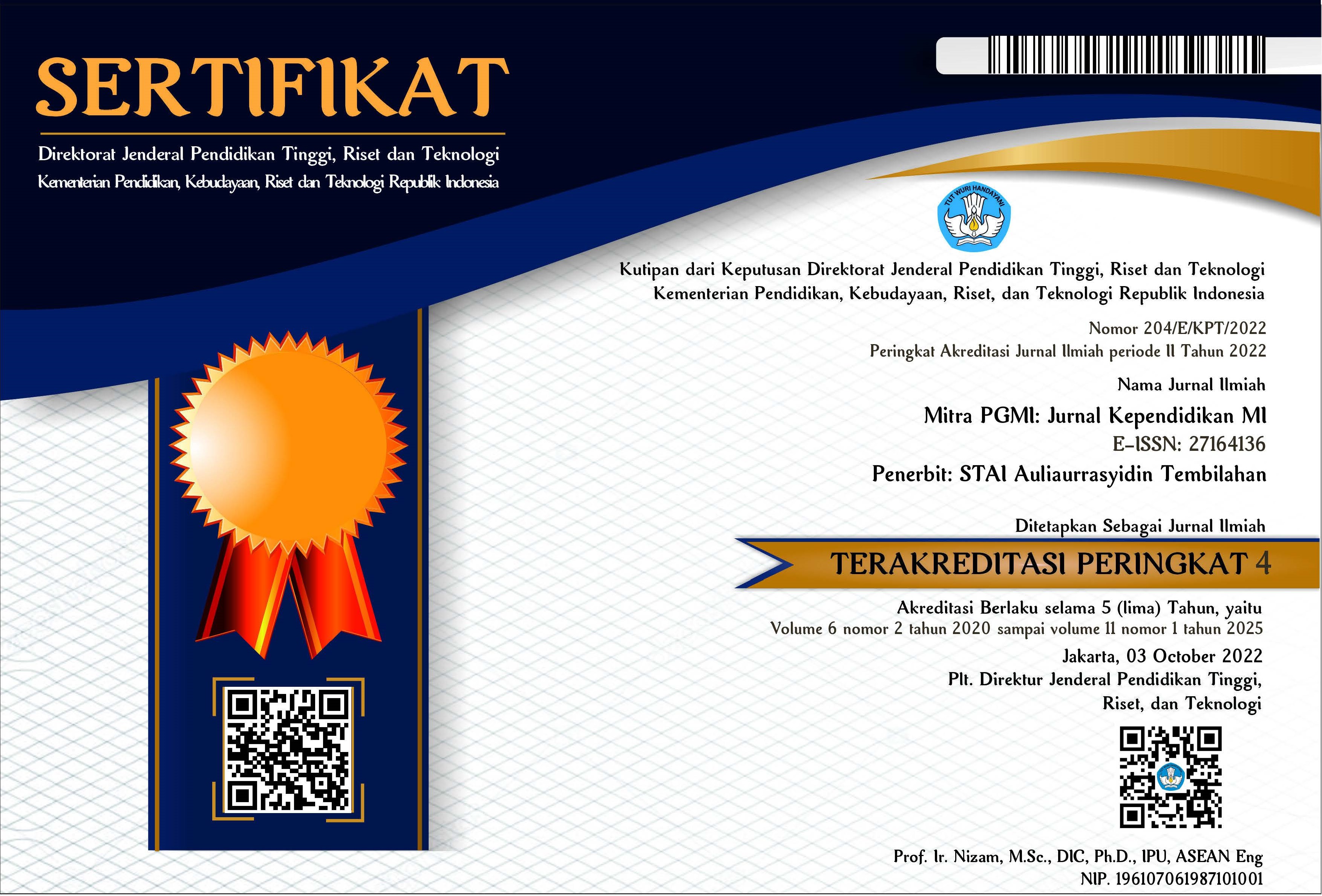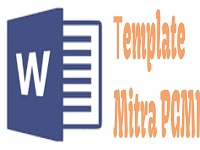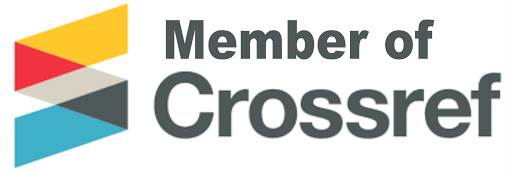Hubungan Pengelolaan Kelas terhadap Hasil Belajar Siswa
DOI:
https://doi.org/10.46963/mpgmi.v7i2.364Keywords:
Classroom, Management, Learning OutcomesAbstract
The purpose of this study was to determine the relationship between classroom management and students' learning outcomes at grade IV SDN 010 Tembilahan Hulu. This type of research was quantitative research. The data in this study were collected using questionnaires, documentation and analyzed using product-moment correlation with the help of SPSS 22.0. The results of the data analysis showed that the value of sig. (2-tailed) between classroom management (x) and learning outcomes (y) was 0.000 <0.05, which means that there was a significant correlation between classroom management variables and learning outcomes. The calculated r-value for the relationship between classroom management (x) and learning outcomes (y) was 0.642 > from 0.374, so it can conclude that there was a relationship or correlation between classroom management and learning outcomes. Because the calculated r in this analysis was positive, meaning that the relationship between the two variables was positive.
Downloads
References
Kompri. (2015). Manajemen Pendidikan. Bandung: Alfabeta.
Saebani, B. A. (2008). Metodologi Penelitian. Bandung: Pustaka Setia.
Sugiyono. (2016). Metode Penelitian. Bandung: Alfabeta.
Susanto, A. (2013). Belajar & Pembelajaran. Jakarta: Kencana.
Djamarah, S. A., Zein., A. (2010). Strategi Belajar Mengajar. Jakarta: Rineka Cipta.
Downloads
Published
Issue
Section
License
Copyright (c) 2021 Zikrillah Rahmayanti

This work is licensed under a Creative Commons Attribution-ShareAlike 4.0 International License.
Authors who publish with this journal agree to the following terms:
1. Copyright on any article is retained by the author(s).
2. The author grants the journal, right of first publication with the work simultaneously licensed under a Creative Commons Attribution shareAlike 4.0 International License that allows others to share the work with an acknowledgment of the work’s authorship and initial publication in this journal.
3. Authors are able to enter into separate, additional contractual arrangements for the non-exclusive distribution of the journal’s published version of the work (e.g., post it to an institutional repository or publish it in a book), with an acknowledgment of its initial publication in this journal.
4. Authors are permitted and encouraged to post their work online (e.g., in institutional repositories or on their website) prior to and during the submission process, as it can lead to productive exchanges, as well as earlier and greater citation of published work.
5. The article and any associated published material is distributed under the Creative Commons Attribution-ShareAlike 4.0 International License








2.png)


